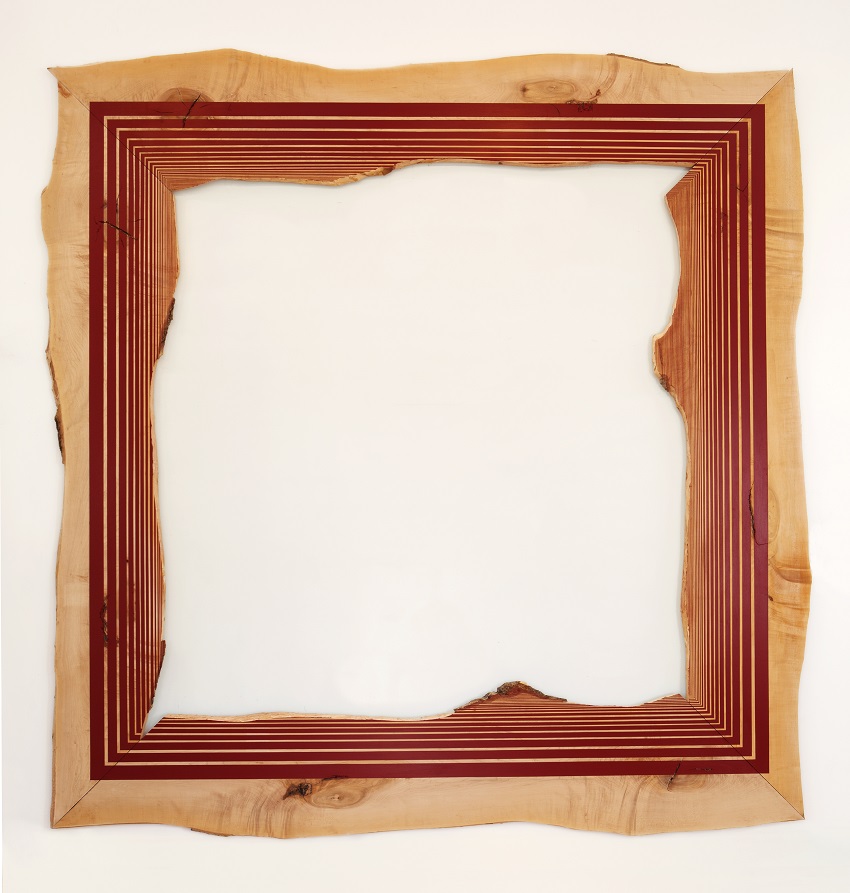Jason Middlebrook (Born 1966 in Jackson, MI) works in sculpture, drawing, painting, and installation to investigate the clash between nature and the built environment. In California, where the artist was raised, this is called the suburban/wildlife interface: a trouble zone where wildfires regularly decimate neighborhoods and where you might see a coyote trotting down the street. In these edge scenarios, humankind encroaches on nature. Middlebrook’s drawings depict weedy, trash-strewn hillsides teeming with avian life. Roughhewn wooden planks, looking like construction castoffs, are embellished with paint and varnish and lean against the wall like surfboards or minimalist sculptures.
In Finding Square, Middlebrook moves away from quasi-narrative depictions of decaying landscapes and toward abstract modes. A roughly hewn empty wooden frame speaks more to roadside handicrafts (chainsaw animal sculptures) than to fine art accoutrements. The molding is painted with concentric, deep umber-red geometric borders of diminishing width that suggest pictorial recession. These nested borders are evocative of Frank Stella’s groundbreaking early painting, Sol LeWitt’s drawn and painted lines, and Josef Albers’s series Homage to the Square. The frame is, therefore, a ground for painting; with timber substituting for stretched canvas, the painting is also object. The found object is readymade by nature—or, rather, by our manipulation of it. The interior space remains empty, making the wall on which it hangs the “picture” on display. Within this body of work are planks of similarly roughhewn wood, painted to highlight the wood grain or time-demarcating rings.
